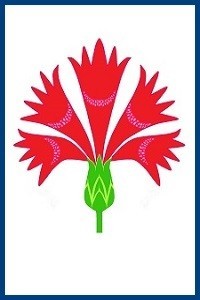Tuz Gölü Özel Çevre Koruma Bölgesi Göllerinde Alg Çeşitliliği ve Potansiyel Siyanobakteri Toksisitesi
Beslenme İlişkileri, Algler, Tuz Gölü Özel Çevre Koruma Bölgesi, Cyanotoksin, Nutritional relationships, algae, Tuz Lake Special Environmental Protection Area, cyanotoxin
Algal Diversity and Potential Cyanobacteria Toxicity in Tuz Lake Special Environmental Protection Area Lakes
Nutritional relationships, algae, Tuz Lake Special Environmental Protection Area, cyanotoxin,
___
- Amarouayache, M. & Kara, M.H. (2017). Aspects of life history of Artemia salina (Crustacea, Branchiopoda) from Algeria reared in different conditions of salinity. Vie et Milieu 67(1): 15–20.
- Anagnostidis, K. & Komárek, J. (1988). Modern approach to the classification system of Cyanophytes Oscillatoriales. Algological Studies (Suppl. Vol.) 50-53: 327–472.
- Atıcı, T. (2020). Production and collection of microalgae isolated from freshwater reserves in Central Anatolia, Turkey. Türler ve Habitatlar 1(1): 3744.
- Atıcı, T., Obalı, O., Akköz, C. & Elmacı, A. (2001). Isolation and Identification of Halophytic Algae from Salty Soil around Salt Lake of Turkey. Pakistan Journal of Biological Sciences 4(3): 298–300.
- Bourelly, P. (1966). Les Algues d’eau douce. Tome I: Les Algues vertes. Editions N. Boubee & Cie., Paris.
- Bourelly, P. (1968). Les Algues d’eau douce. Tome II: Les Algues janues et brunes. Editions N. Boubee & Cie, Paris.
- Çakmakçı, M.L. & Karahan, A.G. (1995). Mikrobiyolojiye Giriş. Bizim Büro Basımevi, Ankara.
- Cessford, G. & Muhar, A. (2003). Monitoring Options for Visitor Numbers in National Parks and Natural Areas. Journal for Nature Conservation 11(4): 240–250. DOI: https://doi.org/ 10.1078/1617-1381-00055.
- Cleve-Euler, A. (1953). Die Diatomeen von Schweden und Finnland. Teil II-III. Almqvist & Wiksells Boktryckeri AB, Stockholm.
- Cleve-Euler, A. (1955). Die Diatomeen von Schweden und Finnland. Teil IV-V. Almqvist & Wiksells Boktryckeri AB, Stockholm.
- Cox, E.J. (2015). Coscinodiscophyceae, Mediophyceae, Fragilariophyceae, Bacillariophyceae (Diatoms)] In: Frey, W. (Ed.). Syllabus of Plant Families. Adolf Engler's Syllabus der Pflanzenfamilien. Photoautotrophic eukaryotic algae Glaucocystophyta, Cryptophyta, Dinophyta / Dinozoa, Heterokontophyta / Ochrophyta, Chlorarachniophyta / Cercozoa, Euglenophyta / Euglenozoa, Chlorophyta, Streptophyta. 13th Ed., Borntraeger Science Publishers, Berlin, pp. 64103.
- Des Marais, D.J. (1995). The Biogeochemistry of Hypersaline Microbial Mats] In: Jones, J.G. (Ed.) Advances in Microbial Ecology. Vol. 14. Springer, Boston.
- Eagles, P., McCool, S. & Haynes, C. (2002). Sustainable Tourism in Protected Areas: Guidelines for Planning and Management. IUCN, Gland.
- Farrell, T.A. & Marion, J.L. (2002). The Protected Area Visitor Impact Management (PAVIM) Framework: A Simplified Process for Making Management Decisions. Journal of Sustainable Tourism 10(1): 31–51.
- Gerrath, J.F. & Denny, P. (1980). Freshwater algae of Siera Leone III. Cyanophyta, Chrysophyta, Xantophyta, Chloromonadophyta, Cryptophyta, Dinophyta. Nova Hedwigia 33: 445–463.
- Giongo, F., Bosco–Nizeye, J. & Wallace, N. (1993). A Study of Visitor Management in the World’s National Parks and Protected Areas. Colorado State University: Ecotourism Society, Colorado.
- Guiry, M.D. & Guiry, G.M. (2022). AlgaeBase. World-wide electronic publication. National University of Ireland, Galway. https://www.algaebase.org 29.09.2022].
- Hall, C.M. & McArthur, S. (1996). Visitor Management: Principles and Practice] In: Hall, C.M. & McArthur, S. (Eds.). Heritage Management in Australia and New Zealand. Oxford University Press, Melbourne, pp. 37–54.
- Huber-Pestalozzi, G. (1982). Das Phytoplankton des Süsswasers, 8. Teil, 1. Halfte, Conjugatophyceae, Zygnematales and Desmidiales. E.Schweizerbart’sche Verlagsbuchhandlung, Stuttgart.
- Javor, B. (1989). Hypersaline Environments. Springer-Verlag, Berlin.
- Karaman, S. & Gökalp, Z. (2010). Küresel Isınma ve İklim Değişikliğinin Su Kaynakları Üzerine Etkileri. Tarım Bilimleri Araştırma Dergisi 3(1): 5966.
- Katırcıoğlu, H., Akın, B. & Atıcı, T. (2004). Microalgal Toxin(s): Characteristics and Importance. African Journal of Biotechnology 3(12): 667–674.
- Kociolek, J.P., Blanco, S., Coste, M., Ector, L., Liu, Y., Karthick, B., Kulikovskiy, M., Lundholm, N., Ludwig, T., Potapova, M., Rimet, F., Sabbe, K., Sala, S., Sar, E., Taylor, J., Van de Vijver, B., Wetzel, C.E., Williams, D.M.,
- Witkowski, A. & Witkowski, J. (2022). DiatomBase. https://www.diatombase.org 29.09.2022].
- Korshikov, O.A. (1987). The Freshwater Algae of the Ukrainian S.S.R. Vol. V. Bishen Singh Mahendra Pal Singh & Koeltz Scientific Books, Dehra Dun & Köenigstein.
- Krammer, K. & Lange-Bertalot, H. (2000). Süsswasserflora von Mitteleuropa, Bacillariophyceae, 3. Teil: Centrales, Fragilariaceae, Eunotiaceae. Spektrum Akademischer Verlag GmbH Heidelberg, Berlin.
- Mason, P. (2005). Visitor management in protected areas of the periphery: Polar perspectives. Tourism and Hospitality Planning & Development 2(3): 171–190.
- Newsome, D. (2002). Aspects of Tourism 4: Natural Area Tourism: Ecology, Impacts and Management. Channel View Publications, Clevedon, 340 p.
- Patrick, R. & Reimer, C.W. (1975). The Diatoms of the United States. Vol. II. Academy of Natural Sciences of Philadelphia, Philadelphia.
- Prescott, G.W. (1975). Algae of the Western Great Lakes Area. Michigan State University, Michigan.
- Resmi Gazete (2015). Resmi Gazete. https://www.resmigazete.gov.tr/eskiler/2015/04/20150415-18.htm 26.09.2022].
- Round, F.E. (1984). The Ecology of Algae. Cambridge University Press, Cambridge.
- Round, F.E. (1993). A Review and Methods for the Use of Epilithic Diatoms for Detecting and Monitoring Changes in River Water Quality (Methods for the Examination of Waters and Associated Materials). The Stationery Office Books, London.
- Sağlam, N.E., Düzgüneş, E. & Balık, İ. (2008). Küresel Isınma ve İklim Değişikliği. E.U. Journal of Fisheries & Aquatic Sciences 25(1): 89–94.
- Shelknanloymilan, L., Atıcı, T. & Obalı, O. (2012). Removal of nitrogen and phosphate by using Chloralla vulgaris on synthetic and organic materials waste water. Biological Diversity and Conservation 5(2): 8994.
- Stanier, R.Y., Adelberg, E.A. & Ingraham, J. (1976). The Microbial World. The Blue Green Bacteria. 13th Ed., Prentice-Hall, Englewood Cliffs, New Jersey.
- Thomas, L. & Middleton, J. (2003). Guidelines for Management Planning of Protected Areas, World Commission on Protected Areas (WCPA), best Practice Protected Area Guidelines. Series No: 10. IUCN, Gland.
- WoRMS Editorial Board (2022). World Register of Marine Species. https://www.marinespecies.org 29.09.2022].
- Başlangıç: 2020
- Yayıncı: Ergin HAMZAOĞLU
Türkiye’den Yeni Bir Tür, Centaurea ankarica (Cardueae, Asteraceae)
Tuna UYSAL, Meryem BOZKURT, Ergin HAMZAOĞLU
Tuğkan ÖZDÖL, Abdurrahman SEFALI, Hasan YILDIRIM
Direkli, Yassıçal ve Abacı Köyleri (Amasya, Türkiye) Arasındaki Bölgenin Sintaksonomik Analizi
Arzu CANSARAN, Cengiz YILDIRIM
Astragalus oksutdagensis (Fabaceae) Tohum Canlılığı, Çimlenme ve Yetişme Özellikleri
